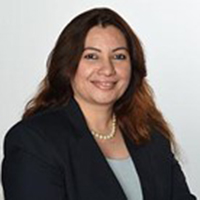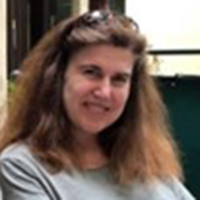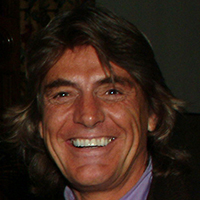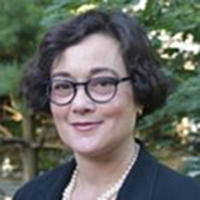Please note: AABB reserves the right to make updates to this program.
Wednesday, August 23, 2023 - On-Demand Available
Program Number: 23EL-866
Director: Asawari Bapat, MD (DPB) (CPS), PGDHHM, Vice President, Quality and Regulatory Affairs, Regenerative Medicine, Infohealth FZE, Dubai, The United Arab Emirates
Moderator: Christina Celluzzi, PhD, MS, CABP(H), Director, Biotherapies, AABB, Bethesda, MD
Speakers:
Biotherapies are conferring hope in the treatment of incurable rare diseases and hold a promise of curing untreatable conditions in the near future. Cryopreservation has been the main method for preserving biological samples for long term storage. It has allowed us to use samples collected for research and therapies from decades ago to do new research and obtain new cures.
Most systems of cellular cryopreservation use a controlled-rate freezer (CRF), or employ dump freezing methods, which are also known as uncontrolled rate (or passive) freezing methods. The CRF freezing system delivers liquid nitrogen into a closed chamber into which the cell suspension is placed. Careful monitoring of the rate of freezing helps to prevent rapid cellular dehydration and ice-crystal formation. The dump freezing method relies heavily on the variability of source of samples, the process of manufacturing and on the variability in the temperature of the freezers. Both methods have been studied for their advantages and disadvantages. A long-term, practical solution to these difficulties lies in successful cryopreservation that offers secure, stable storage at temperatures below −130°C where metabolic change will not occur.
In this program, the faculty explore the challenges with cryopreservation, the new techniques being utilized for innovative products and for the emerging advances that could improve these methods. The essential elements of the cryopreservation process that have to be taken into consideration for process development, with the science underlying cryopreservation at a more fundamental level such as the method of freezing, the correct methods for validations of products and the acceptable release criteria to support successful Biotherapies will be presented in this program.
After participating in this educational activity, participants should be able to:
Please note: if you registered for the live eCast you do not need to register for the on-demand eCast (access to the on-demand eCast was included with the live eCast registration).
| Single Viewer | Register |
| Group Viewing | Register |
This activity is eligible for one (1) continuing education credit/contact hour for California-based nursing professionals, California Lab Personnel, Florida Lab Personnel and General Participation credit. AABB reserves the right to reduce or increase the number of credits granted based on the final activity duration. For more information on each credit type please visit our Continuing Education Credits webpage. Please note: This program is not eligible for continuing medical education credit for physicians.
There is no financial support for this activity.
Claiming Credit
Live Activity - Upon completion of the live activity, you will receive instructions to complete your evaluation, which is necessary to claim credit and receive your certificate of attendance/completion (credit must be claimed by the date provided in the instructions). The evaluation can be found by logging into the AABB Education Platform.
Enduring Activity - Once the enduring (on-demand) program is available, you will receive instructions to access the AABB Education Platform. Upon completion of viewing the enduring activity, you will need to complete the evaluation, which is necessary to claim credit and receive your certificate of completion (credit must be claimed by the date provided in the AABB Education Platform).
Program & Credit Expiration Dates:
Disclosure Declaration
Disclosures for the planners of this event can be found here. Disclosures for the program faculty and peer reviewers are provided at the beginning of the program.
 Dr. Asawari (Asa) Bapat is a Medical Doctor with specialization in Clinical pathology, (Transfusion, Transplants, Lab Medicine and Immunology). She has 20 years of Leadership experience as Medical Director, PI and Vice-President in USA, UAE, India and Australia, managing and supervising, complex diagnostic labs, facilities for regenerative medicine, gene and cellular therapy companies, and designing successful clinical trials towards success. She has been piloting and managing international teams during complex technology transfers including evaluations, regulatory guidelines and risk analysis. Through her network, Asa has built strong relationships and has optimized successful collaborations, business developments and associations efficiently.
Dr. Asawari (Asa) Bapat is a Medical Doctor with specialization in Clinical pathology, (Transfusion, Transplants, Lab Medicine and Immunology). She has 20 years of Leadership experience as Medical Director, PI and Vice-President in USA, UAE, India and Australia, managing and supervising, complex diagnostic labs, facilities for regenerative medicine, gene and cellular therapy companies, and designing successful clinical trials towards success. She has been piloting and managing international teams during complex technology transfers including evaluations, regulatory guidelines and risk analysis. Through her network, Asa has built strong relationships and has optimized successful collaborations, business developments and associations efficiently.
 Dr. Christina Celluzzi has a background in biomedical research which includes basic and applied research in cellular therapy (CT). She holds BS and MS degrees in Microbiology and earned her PhD in Medical Sciences at the University of Nijmegen in The Netherlands where she studied malarial immunity. Her entry into cellular therapies began with seminal research at the University of Pittsburgh investigating the role of dendritic cells (DC) in cytotoxic T-lymphocyte induction in melanoma. She continued in CT with the development of DC closed-culture systems and supporting assays for clinical application as research scientist and faculty member at the American Red Cross Holland Biomedical Laboratory and University of Maryland School of Medicine. She applies her more than 30 years of experience to her current position at AABB serving as a resource to its many CT professionals – helping to create and develop projects, including the Cellular Therapies Certificate Program, as well as other activities for the biotherapies professional.
Dr. Christina Celluzzi has a background in biomedical research which includes basic and applied research in cellular therapy (CT). She holds BS and MS degrees in Microbiology and earned her PhD in Medical Sciences at the University of Nijmegen in The Netherlands where she studied malarial immunity. Her entry into cellular therapies began with seminal research at the University of Pittsburgh investigating the role of dendritic cells (DC) in cytotoxic T-lymphocyte induction in melanoma. She continued in CT with the development of DC closed-culture systems and supporting assays for clinical application as research scientist and faculty member at the American Red Cross Holland Biomedical Laboratory and University of Maryland School of Medicine. She applies her more than 30 years of experience to her current position at AABB serving as a resource to its many CT professionals – helping to create and develop projects, including the Cellular Therapies Certificate Program, as well as other activities for the biotherapies professional.
 Dr. Michael H. Creer is a graduate of the University of Utah College of Medicine. He completed his residency and fellowship training in the Departments of Laboratory Medicine and Cardiology at Washington University in St. Louis where he remained for several years as an Assistant Research Professor engaged in basic research. He later joined the faculty at St. Louis University as Director of the Division of Laboratory Medicine and Medical Director of the St. Louis University Cord Blood Bank where he developed a keen interest in Cryobiology and Cryopreservation techniques and is Chief Editor of the AABB publication entitled Practical Handbook of Cellular Therapy Cryopreservation. He is currently the Laurence M. Demers Distinguished Professor of Pathology and Laboratory Medicine, Division Chief of Laboratory Medicine, Director of Clinical Laboratories and Vice Chair of Laboratory Operations at Penn State University Hershey Medical Center in Hershey, PA.
Dr. Michael H. Creer is a graduate of the University of Utah College of Medicine. He completed his residency and fellowship training in the Departments of Laboratory Medicine and Cardiology at Washington University in St. Louis where he remained for several years as an Assistant Research Professor engaged in basic research. He later joined the faculty at St. Louis University as Director of the Division of Laboratory Medicine and Medical Director of the St. Louis University Cord Blood Bank where he developed a keen interest in Cryobiology and Cryopreservation techniques and is Chief Editor of the AABB publication entitled Practical Handbook of Cellular Therapy Cryopreservation. He is currently the Laurence M. Demers Distinguished Professor of Pathology and Laboratory Medicine, Division Chief of Laboratory Medicine, Director of Clinical Laboratories and Vice Chair of Laboratory Operations at Penn State University Hershey Medical Center in Hershey, PA.
 Dr. Ronit Slotky is a professor of oncology at Hackensack Median Health School of Medicine and the Director of the Cell Therapies Manufacturing Facility at the Hackensack University Medical Center. She earned her PhD at the Technion, Israel Institute of Technology in Israel, and completed her post doctorate at Columbia University Medical Center studying proteins’ structure and function, as well her MSc in Biostatistics at Columbia University Mailman School of Public Health in New York. Dr. Slotky has been working in the cellular therapy field for over 15 years and has published numerous scientific articles in the field of cell processing. She is the chair of the AABB Cellular Therapy Section Coordinating Committee and a member of the FACT Quality Management Standards Committee. Her current work and research efforts focuses on improving cell processing methods and patients’ outcomes and providing education opportunities for clinicians and researchers.
Dr. Ronit Slotky is a professor of oncology at Hackensack Median Health School of Medicine and the Director of the Cell Therapies Manufacturing Facility at the Hackensack University Medical Center. She earned her PhD at the Technion, Israel Institute of Technology in Israel, and completed her post doctorate at Columbia University Medical Center studying proteins’ structure and function, as well her MSc in Biostatistics at Columbia University Mailman School of Public Health in New York. Dr. Slotky has been working in the cellular therapy field for over 15 years and has published numerous scientific articles in the field of cell processing. She is the chair of the AABB Cellular Therapy Section Coordinating Committee and a member of the FACT Quality Management Standards Committee. Her current work and research efforts focuses on improving cell processing methods and patients’ outcomes and providing education opportunities for clinicians and researchers.